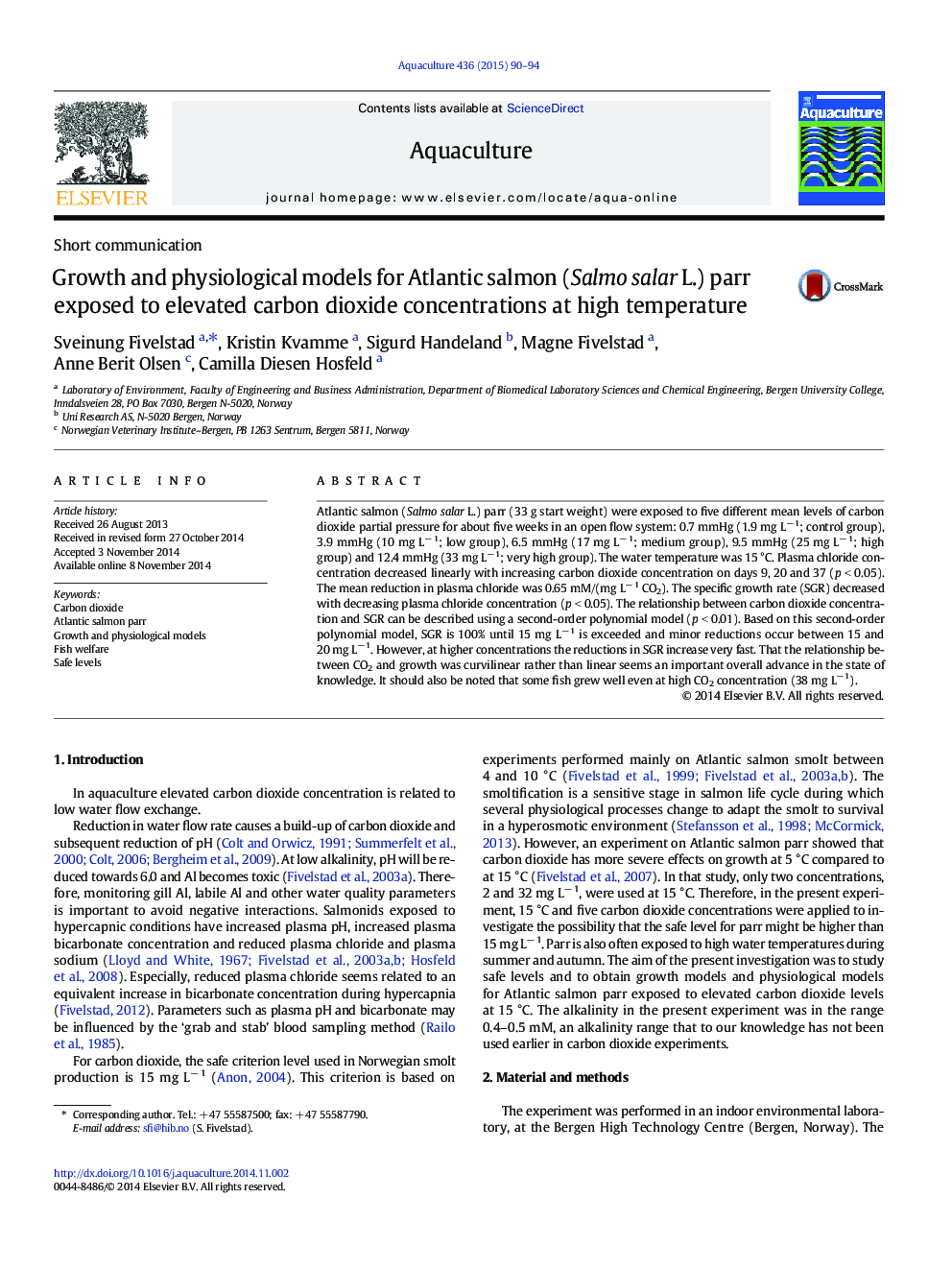| Article ID | Journal | Published Year | Pages | File Type |
|---|---|---|---|---|
| 8494804 | Aquaculture | 2015 | 5 Pages |
Abstract
Atlantic salmon (Salmo salar L.) parr (33 g start weight) were exposed to five different mean levels of carbon dioxide partial pressure for about five weeks in an open flow system: 0.7 mmHg (1.9 mg Lâ 1; control group), 3.9 mmHg (10 mg Lâ 1; low group), 6.5 mmHg (17 mg Lâ 1; medium group), 9.5 mmHg (25 mg Lâ 1; high group) and 12.4 mmHg (33 mg Lâ 1; very high group). The water temperature was 15 °C. Plasma chloride concentration decreased linearly with increasing carbon dioxide concentration on days 9, 20 and 37 (p < 0.05). The mean reduction in plasma chloride was 0.65 mM/(mg Lâ 1 CO2). The specific growth rate (SGR) decreased with decreasing plasma chloride concentration (p < 0.05). The relationship between carbon dioxide concentration and SGR can be described using a second-order polynomial model (p < 0.01). Based on this second-order polynomial model, SGR is 100% until 15 mg Lâ 1 is exceeded and minor reductions occur between 15 and 20 mg Lâ 1. However, at higher concentrations the reductions in SGR increase very fast. That the relationship between CO2 and growth was curvilinear rather than linear seems an important overall advance in the state of knowledge. It should also be noted that some fish grew well even at high CO2 concentration (38 mg Lâ 1).
Keywords
Related Topics
Life Sciences
Agricultural and Biological Sciences
Aquatic Science
Authors
Sveinung Fivelstad, Kristin Kvamme, Sigurd Handeland, Magne Fivelstad, Anne Berit Olsen, Camilla Diesen Hosfeld,
